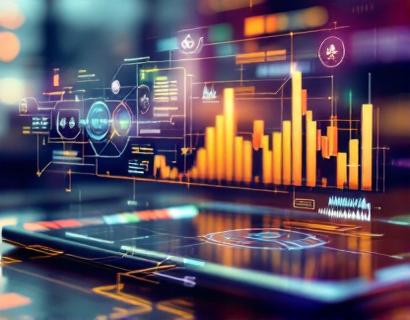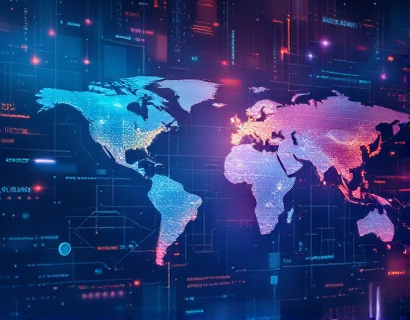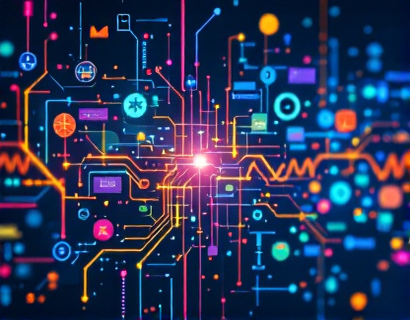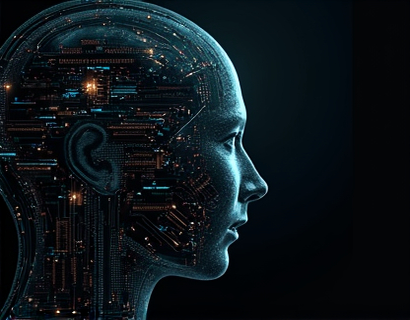Crypto and AI: Transforming Digital Interactions for Enhanced User Engagement
The intersection of cryptocurrency and artificial intelligence (AI) is revolutionizing the digital landscape, creating unprecedented opportunities for enhanced user engagement and connectivity. This fusion of technologies is not only redefining how we interact online but also driving significant growth in the tech sector. As we delve into the latest advancements, it becomes clear that the synergy between crypto and AI is paving the way for a more secure, efficient, and personalized digital experience.
The advent of blockchain technology has introduced a new paradigm in digital transactions, offering transparency, security, and decentralization. Cryptocurrencies, built on blockchain, have emerged as a viable alternative to traditional fiat currencies, providing users with greater control over their financial data and transactions. Meanwhile, AI has been transforming various industries by enabling machines to learn from data, adapt to new inputs, and perform tasks that traditionally required human intervention. When these two technologies converge, the potential for innovation is immense.
Enhancing Security through AI-Driven Crypto Solutions
One of the primary benefits of combining crypto and AI is the enhancement of security measures. Traditional cybersecurity methods often struggle to keep pace with evolving threats, but AI can analyze vast amounts of data in real-time to detect and mitigate risks more effectively. For instance, AI algorithms can identify patterns indicative of fraudulent activities, such as unusual transaction volumes or suspicious login attempts, and trigger immediate alerts or automated responses to prevent potential breaches.
Smart contracts, a cornerstone of blockchain technology, can also be fortified with AI. These self-executing contracts with the terms directly written into code can incorporate AI to dynamically adjust their parameters based on real-time data. This ensures that transactions are not only secure but also adaptable to changing conditions, reducing the risk of errors and fraud.
Personalized User Experiences through AI-Powered Crypto Platforms
The integration of AI in crypto platforms is transforming user experiences by offering personalized services. AI-driven recommendation engines can analyze user behavior and preferences to suggest tailored investment strategies, asset allocations, and trading opportunities. This level of personalization not only enhances user engagement but also empowers individuals to make more informed decisions, leading to better financial outcomes.
Moreover, AI can optimize user interfaces and interactions on crypto platforms. By understanding user patterns and preferences, AI can customize dashboards, notifications, and other interface elements to suit individual needs. This not only improves usability but also increases user satisfaction and retention, crucial factors in the competitive crypto market.
Decentralized AI: A New Frontier in Crypto
The concept of decentralized AI is gaining traction, particularly within the crypto community. Decentralized AI platforms allow for the distribution of AI computations across a network of nodes, eliminating the need for centralized servers and reducing the risk of single points of failure. This decentralization aligns perfectly with the principles of blockchain, fostering a more resilient and democratic AI ecosystem.
Decentralized AI can also enhance data privacy. By leveraging federated learning, AI models can be trained on data that remains on users' devices, minimizing the need to transfer sensitive information to central servers. This approach not only protects user data but also complies with stringent data protection regulations, making it an attractive solution for crypto platforms handling large volumes of sensitive information.
Tokenization and AI: Revolutionizing Asset Management
The tokenization of assets, enabled by blockchain, combined with AI, is transforming asset management and investment strategies. Tokenization allows physical and digital assets to be represented as digital tokens on a blockchain, making them tradable and accessible to a broader audience. AI can further enhance this process by analyzing market trends, asset performance, and investor behavior to optimize token issuance, pricing, and distribution.
AI-driven portfolio management tools can also provide real-time insights and recommendations, helping investors diversify their portfolios and manage risks more effectively. These tools can simulate various market scenarios, predict potential outcomes, and adjust investment strategies accordingly, offering a level of sophistication and precision that traditional methods cannot match.
Enhancing Connectivity and Interoperability
The integration of crypto and AI is not only improving individual platforms but also enhancing overall connectivity and interoperability in the digital ecosystem. Blockchain-based protocols can facilitate seamless interactions between different AI systems, enabling a more cohesive and efficient digital environment. This interoperability is crucial for the development of smart cities, IoT devices, and other interconnected systems where data exchange and coordination are paramount.
Cross-chain solutions, powered by AI, can further bridge the gap between different blockchain networks, allowing for the transfer of assets and data across platforms. This not only enhances the functionality of individual crypto projects but also fosters a more integrated and dynamic digital economy.
Challenges and Considerations
Despite the numerous benefits, the convergence of crypto and AI is not without challenges. One of the primary concerns is the regulatory landscape. As both crypto and AI operate in relatively uncharted territories, regulatory frameworks are still evolving. Ensuring compliance while leveraging the full potential of these technologies requires careful navigation and proactive engagement with policymakers.
Another challenge is the technical complexity involved in integrating AI with blockchain systems. Developing robust, scalable, and secure AI solutions that can operate on decentralized networks demands expertise in both domains. Collaboration between tech experts, developers, and regulatory bodies is essential to overcome these hurdles and foster innovation.
Future Prospects: The Next Evolution of Digital Interactions
The future of digital interactions is increasingly shaped by the synergy between crypto and AI. As these technologies continue to mature, we can expect even more sophisticated applications that enhance user engagement, security, and personalization. The potential for decentralized AI markets, where AI models and data are traded as tokens, could revolutionize the way AI services are delivered and monetized.
Furthermore, the integration of AI with emerging technologies like quantum computing and edge computing will open new avenues for innovation. Quantum computing, with its ability to process complex calculations at unprecedented speeds, can significantly enhance AI algorithms, making them more powerful and efficient. When combined with edge computing, which processes data closer to the source, the latency and bandwidth issues associated with centralized AI systems can be mitigated, leading to faster and more responsive applications.
In conclusion, the fusion of crypto and AI is not just a technological trend but a transformative force reshaping the digital landscape. By enhancing security, personalizing user experiences, and fostering connectivity, these technologies are driving growth and engagement in the tech sector. As we look ahead, the continued evolution of this synergy promises to unlock new possibilities, making the digital world more secure, efficient, and user-centric.










































